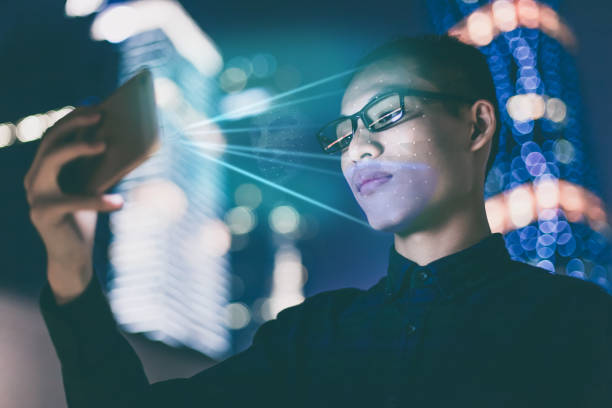The financial technology industry, better known as fintech, continuously evolves with technological developments and has seen strides in recent years. The fintech industry offers innovative ways to manage money and conduct financial transactions, thriving for convenience and accessibility. However, this convenience comes with increased risks of fraud, where malicious actors get access to the systems with stolen or manipulatively obtained and conduct fraudulent transactions. To ensure the security of the financial world and preserve the integrity of confidential information. It’s crucial to put robust security measures staving off unauthorized access. This is where liveness detection comes into play, supporting fintech to secure financial transactions and minimize the risks of fraudulent activities.
What is Liveness Detection: Why It’s Crucial
Liveness detection technology is an advanced security feature integrated into biometric authentication to confirm the liveness of the claimed identity. This advanced technology employs 3D depth sensing, computer vision, motion analysis, and computer vision. To confirm whether the person seeking to get access to the services is live or not. Micro-expressions or subtle movements are minutely analyzed to distinguish between real and fake identities.
So what’s the point of confirming the liveness of identities when authentication solutions are there to verify user’s identities? The alarming rate of identity spoofing and the number of deepfakes is increasing. It’s hard to discern whether the claimed identity is a genuine individual or a fabricated mask attack. Facial liveness detection fills this gap accurately verifies the identity of real users and flags spoofed attempts in real time.
Loopholes in Traditional ID Verification Methods
As you are aware fintech relies on user names and passwords for verification of users and to grant access to the system. But the problem is passwords can be forged or replicated, which are exploited to get unauthorized access. Through phishing attacks or social engineering tactics, malicious actors get access to your passwords. Use the acquired passwords to log into the systems and conduct potential transactions.
Fintech industries are also adopting biometric authentication technology, which confirms the identity of users by scanning fingerprints and facial features. Biometric data which is deemed resistant to spoofing or replication is now being replicated or forged by tech-savvy and exploited for malicious purposes. This demands robust security measures that can prevent malicious actors. From entering the systems even if they have your passwords or biometric data.
By What Means Face Liveness Detection is Crucial for Fintech
Face liveness detection is reshaping the fintech industry by accurately authenticating genuine users. Flagging fabricated identities to ward off unauthorized presence. Let’s shortly understand how facial liveness detection offers potential benefits to the industry.
- Effective Compliance with KYC Standards: Know-your-customer (KYC) regulations require financial services to accurately verify the identity of customers or users during the onboarding process. Document liveness detection confirms that the person presenting ID documents is a legitimate owner and associated risks are also evaluated.
- Reduced Risks of Unauthorized Access: When someone with a stolen or hacked identity seeks to get access to the financial systems, facial liveness detection actively recognizes the fabricated identity and rejects the permission. If facial liveness detection actively flags the fabricated identities the chances of fraudulent activities are drastically reduced.
- Better Use Experience: Face liveness detection facilitates users by eliminating the need to remember long and complex passwords and authenticates the identity in a matter of seconds. Face liveness detection requires users to come in front of the camera or upload the latest selfies which takes minimal effort. The identity is authenticated swiftly, increasing overall user convenience.
- Enhanced Trust & Reliability: Customers feel confident in knowing that their biometrics are secured and finance is protected against unauthorized access, driven by enhanced trust and confidence in the reliability of the fintech industry.
How Does 3D Liveness Detection Enhance Security?
3D liveness detection employs computer vision, sophisticated machine learning, and texture analysis to accurately confirm the liveness of the claimed identity. This technology enhances the security of digital identities by making sure that they are not allowed to be exploited by malicious actors. Minute details like face texture, wrinkles, or subtle expressions are hard to mimic by mask attacks. 3D liveness detection precisely evaluates the claimed identity and looks for inconsistencies. Active liveness detection recognizes the identity of the users by looking for small details like blinking, smiling, eye movements, and micro-expressions. These humanistic gestures are hard to replicate by spoofed identities, leading to the timely detection of fraudulent activities. When no unauthorized person is allowed to enter into the financial systems. He won’t be able to conduct fraudulent transactions or steal your sensitive information.
Final Thoughts
Face liveness detection, combined with other biometric identifiers such as voice notes, iris, or retina patterns, will offer stronger security. Protecting financial services and users from the potential risks of fraudulent activities. Moreover, the integration of machine learning can significantly enhance the accuracy and speed of liveness detection technology. Ensuring the authentication of genuine individuals in a matter of seconds.



Pingback:Discover How Organic SEO Services Can Help Fintech Industries in 2024 - Buddies Reach